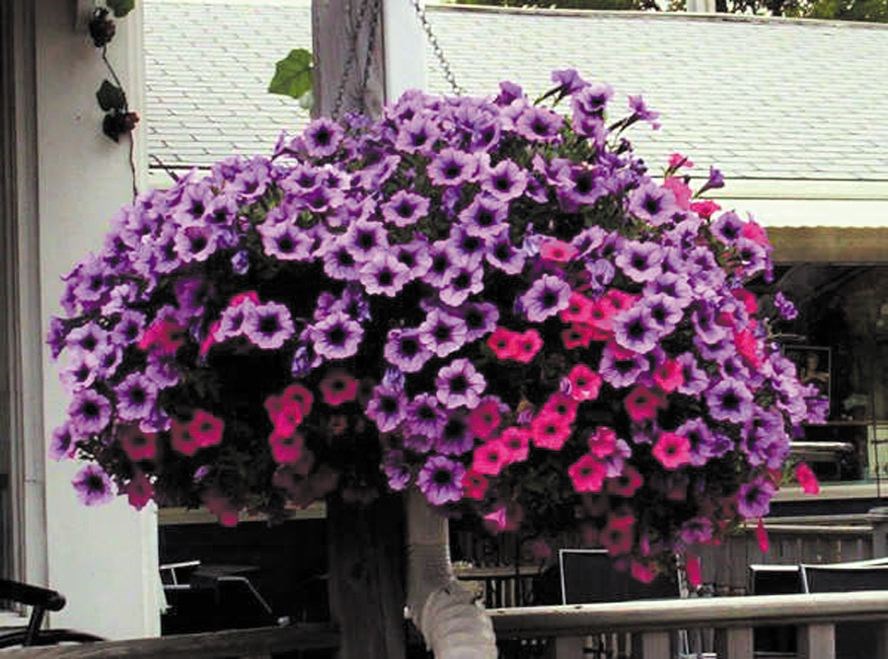Flowering hanging baskets are a great way to add instant colour to a patio, front entrance or landscape with very little effort. They are perfect for those smaller areas as they take no floor space and draw the eye up, adding another dimension to the landscape.
Most plants grow up but plants used in hanging baskets have a tendency to hang down. Over the past few years, the selection of plants that can be used in hanging baskets has greatly increased. Supertunias are perfect for hanging baskets as they are a fast-growing, self-cleaning petunia that will bloom all season if cared for properly. Because they are self-cleaning they require very little maintenance as the old flowers do not need to be removed. They only need to be watered on a daily basis and fertilized weekly. Supertunias come in a wide array of colours and types and can be used on their own or in mixed baskets. They do best in full sun.
Superbells are calibrachoa hybrids and the flowers are similar to petunias but are smaller. There are many different varieties and colours to choose from and they are low maintenance and only need to be watered on time, as they prefer moist soil, and fertilized weekly.
Superbena is a verbena hybrid that produces large clusters of flowers that will bloom throughout the summer. The flowers attract butterflies and hummingbirds. There are different varieties that come in different colours to mix and match. Superbena is low-maintenance and heat-tolerant, making it ideal for those warmer areas. It is often mixed with supertunias and superbells in hanging baskets.
When creating a hanging basket you will often use "fillers" to finish it off. Fillers are those plants that are mixed in with other plants and are usually not used on their own. Popular fillers include the yellow-flowered bidens, known for their tolerance to many conditions. Bacopa has either a white or a soft pink flower and hangs beautifully. Lobelia is another favourite, as are the different varieties of lantana, nemesia, torenia and scaevola, which all produce small attractive flowers.
If you are looking for colourful plant fillers, ipomoea comes in different shades and leaf shapes and adds beautiful colour to the hanging basket.
The fun part about making your own outdoor hanging basket is that you can customize it to your likes and that it is one of a kind. When picking out the container, look for one that is at least 40 centimetres wide and deep. The larger the container the more soil it will hold, and the less chance of it drying out. Small containers tend to dry out much more quickly than large containers just because there is very little soil to retain the moisture. Containers can be wood, plastic, moss or ceramic. Just make sure that it has drainage.
The most important part of a hanging basket is the soil that is put in it. The soil is the foundation for the plant's roots so it should be able to hold the moisture and be airy enough to provide air so that the plant's roots can breathe. Choose a high quality outdoor container/greenhouse soil.
Before picking out the plants to put into the container, decide first where the container will be placed and how much sun or shade it receives, as this will determine which plants to choose. Most plants are sun-loving but a few, such as begonias and fuchsias, are shade-loving.
When the planter has been planted, give it a thorough water. Place it in a sheltered area for the first 10 to 14 days so that the plants can be hardened off and then place it in its spot once all threat of frost has passed.
To keep plants healthy and growing fertilize them weekly with a flowering plant fertilizer such as the water-soluble 12-36-12 and check them daily for water. Also remove any broken stems, or damaged or diseased foliage or flowers, before the problem spreads. If cared for properly, a hanging basket can give you a season of pleasure.
Hanging baskets make great gifts, so don't forget Mother's Day this Sunday.



